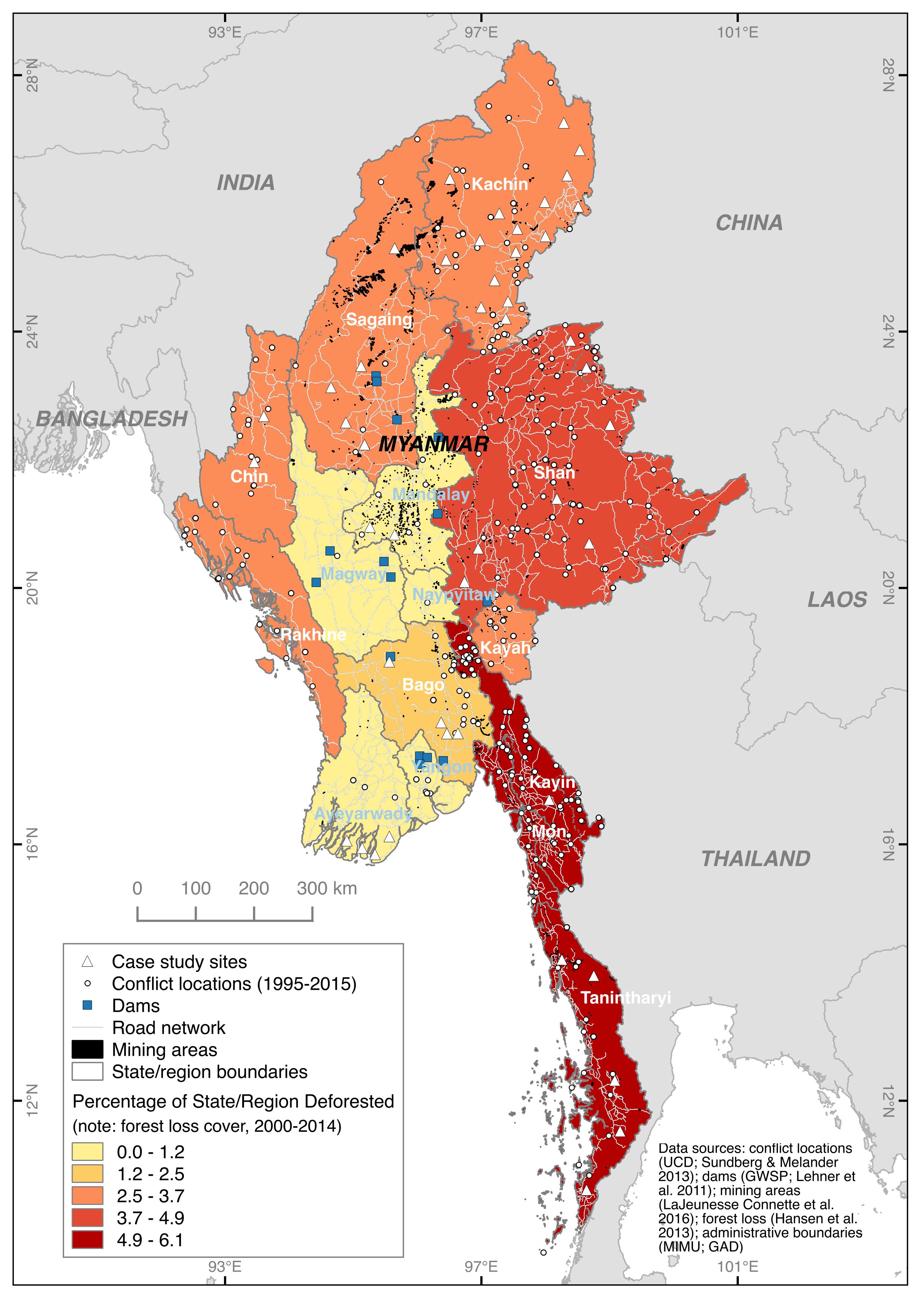New paper on untangling the complex deforestation drivers in Myanmar.
I am happy to announce our recently accepted paper for publication in Conservation Biology journal. The paper entitled, Untangling the proximate causes and underlying drivers of deforestation and forest degradation in Myanmar, is the product of our research lab, and a study led by Ms Cheng Ling Lim and Dr Graham Prescott under the supervision of Prof Edward Webb (our lab’s lead principal investigator) and Prof Alan Ziegler (our collaborator and lead principal investigator of the Wet Lab at the NUS Department of Geography) [1]. The study is part of our ongoing project about understanding the proximate and underlying factors leading to deforestation and land use change in Myanmar, which is funded by the Ministry of Education, Singapore.
In the study, we conducted a systematic review of published papers regarding deforestation in Myanmar, and applied a system dynamics approach and causal loop network analysis to map and visualise the linkages among deforestation drivers. We constructed causal-network diagrams to comprehend the nexus between deforestation and forest degradation and their proximate causes, as well as the relationships among proximate causes and underlying drivers (see Geist & Lambin’s seminal 2002 paper regarding the proximate causes and underlying driving forces of tropical deforestation) [2].
Our study showed that proximate causes included infrastructure development, timber extraction, and agricultural expansion of rice and boom crops such as oil palm and rubber. These were facilitated mainly by formal agricultural, logging, mining, and hydropower concessions, economic investment, and social issues relating to civil war and land tenure. Reform of land laws, the link between natural resource extraction and civil war, and the allocation of agricultural concessions will influence the extent of Myanmar’s deforestation and forest degradation in the future.
As Myanmar transitions towards a more open economy, a complex array of pressures to convert its biologically diverse forests is expected to intensify over at least the next decade [1, 3-4]. Through the causal-network analysis, we were able to identify priority areas for policy interventions to reduce forest loss and degradation such as creating a public registry of land-concession holders to deter corruption in concession allocation. This analytical approach can also be applied to other countries, particularly those undergoing political transition, to inform policies aiming to reduce pressures to forests.
In the coming months, we will be presenting the results of our studies, particularly this causal network paper and an upcoming horizon scanning paper (more on the latter soon), to government leaders, policymakers, and development organisations in Myanmar to inform policy and actions in support of conserving its globally important forests and biodiversity. I hope to share about that presentation soon, so watch this space.
In the meantime, let me share one of the maps I’ve drawn for our new paper, which was in one of the earlier drafts but we eventually did not include in the final version. The map shows the proximate and some of the underlying causes of forest loss in Myanmar, together with the locations of case studies and the percentage of deforestation in each administrative unit.

References:
[1] Lim, C.L., Prescott, G.W., De Alban, J.D.T., Ziegler, A.D. & Webb, E.L. (In press) Untangling the proximate causes and underlying drivers of deforestation and forest degradation in Myanmar. Conservation Biology. [DOI].
[2] Geist, H.J. & Lambin, E.F. (2002) Proximate causes and underlying driving forces of tropical deforestation. BioScience, 52, 143–150. [DOI].
[3] Webb, E.L., Phelps, J., Friess, D.A., Rao, M.V. & Ziegler, A.D. (2012) Environment-friendly reform in Myanmar. Science, 336, 295–295. [DOI].
[4] Webb, E.L., Jachowski, N.R.A., Phelps, J., Friess, D.A., Than, M.M. & Ziegler, A.D. (2014) Deforestation in the Ayeyarwady Delta and the conservation implications of an internationally-engaged Myanmar. Global Environmental Change, 24, 321–333. [DOI].
- In case you’re interested to read our paper but are unable to access it through a paywall, please send me a message and I can gladly provide you with a copy.